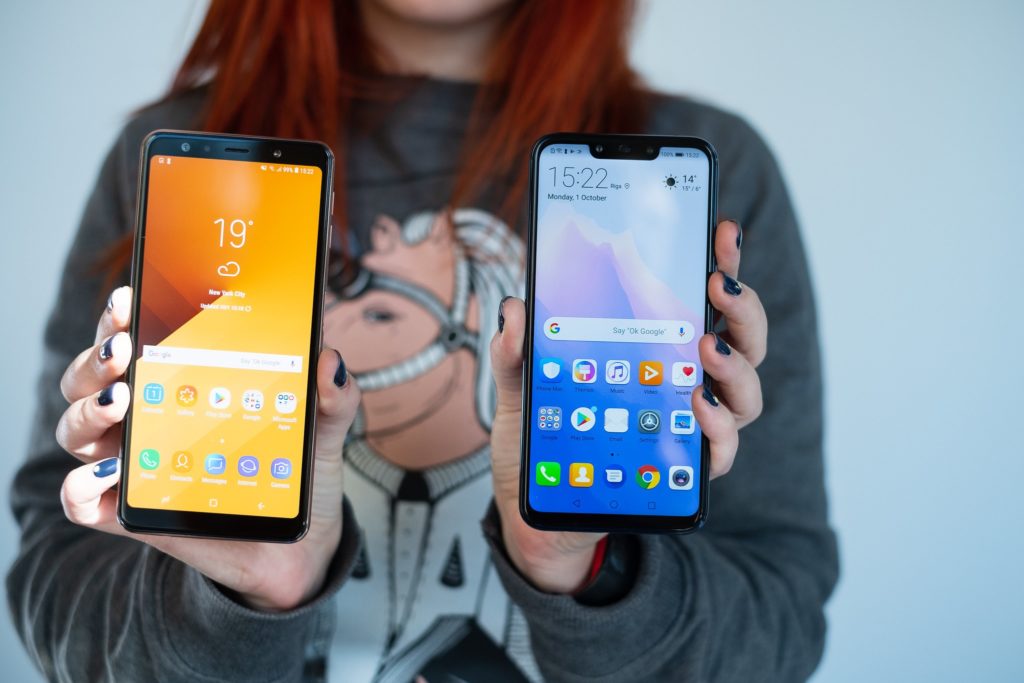The Peninsula
South Korea Caught in U.S.-China Crossfire

This briefing comes from Korea View, a weekly newsletter published by the Korea Economic Institute. Korea View aims to cover developments that reveal trends on the Korean Peninsula but receive little attention in the United States. If you would like to sign up, please find the online form here.
U.S. restriction on Huawei could be a boon to Korea’s struggling export industry, but potential gains may be erased by China’s retaliatory measures.
What Happened
- The Commerce Department added Huawei to its list of persons and entities deemed to be acting against U.S. security or foreign policy interests. This discourages U.S. companies from selling or transferring technology to Huawei.
- Analysts suggest that Huawei could increase purchases of Samsung memory chips to substitute gaps in the supply chain created by the U.S. government’s decision.
- Samsung is also expected to increase its global sales of handsets and 5G network equipment as other countries avoid purchasing Huawei products.
- Meanwhile, U.S. government officials are reportedly calling on South Korea to restrict the activities of Korean companies that use Huawei equipment.
- China is preparing its own list of “unreliable companies,” which would include entities that disrupt supplies to Chinese companies for “non-commercial purposes.”
Implications: Although many market commentators see the U.S. government’s restrictions on Huawei as an opportunity for Samsung specifically and South Korea more generally, Korea’s export sector remains vulnerable to retaliatory measures from both the United States and China. Huawei’s search for new chipmakers to substitute U.S. suppliers could boost sales for Korean companies, but Washington may pressure Seoul to limit these transactions. The U.S. government did not officially request that South Korea join its restriction on technology sales to Huawei. Nonetheless, a U.S. State Department official reportedly called on a South Korean counterpart to prohibit LG Uplus, which uses Huawei’s equipment, from participating in “sensitive areas” of the Korean economy. Seoul is still negotiating with the U.S. government on key issues like auto tariffs and cost sharing for U.S. forces in South Korea. In an effort to minimize friction with U.S. counterparts while these talks continue, Seoul may voluntarily take measures to limit trade with China.
South Korea is however vulnerable to potential retaliation from China as well. Beijing could respond to measures limiting business ties between Korean companies and Huawei by strategically punishing Korean firms with significant exposure to the China market.
This comes as Korea’s export sector is under duress. Between May 2018 and May 2019, export shipments dropped 9.4%, exceeding forecasts of a 6.6% decline. Semiconductor exports in particular plunged by roughly 30%. China is South Korea’s largest trading partner, accounting for 26.8% of the country’s exports in 2018 (compared with 12% for the United States). Both the potential retaliatory measures by the Chinese government and any voluntary measures to limit exports to China by the South Korean government present major headwinds for the Korean economy at this time.
Context: There is precedent for South Korea voluntarily restricting trade to advance its foreign policy interests. In response to growing U.S.-Iran tensions earlier this year, South Korea cut its oil imports from Iran ahead of any explicit reimposition of sanctions by the U.S. government. In 1992, Seoul severed ties with Taiwan to establish official diplomatic relations with the People’s Republic of China. As a consequence, Taipei nullified preferential agreements on Korean export of foodstuffs and autos. In both instances, however, the economic cost was considerably smaller than what South Korea is facing today.
Korea View is edited by Yong Kwon with the help of Haram Chung, Yea Ji Nam, Steven Lim, and Haeju Lee.
Photo from Kārlis Dambrāns’ photostream on flickr Creative Commons.
